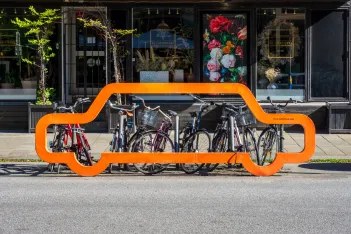15mC topic 2: Reimagining parking – transforming urban parking policies

Challenge description
Throughout the 20th century, cities prioritised car infrastructure, dedicating vast street space to accommodate vehicles. Since essentially every car trip starts and ends in a parking space, parking plays a crucial role in urban mobility transitions. The scale of parking is massive, with parking occupying 10-20% of street space, where cars remain stationary 95% of the time. This extensive use of space reinforces car dominance and conflicts with visions of sustainable, vibrant and healthy neighbourhoods. Therefore, topic #2 aims to address this imbalance, supporting cities in navigating the complexities of parking policies.
Scope
Many European cities have gained comprehensive experience in regulating and managing on-street parking, but implementation varies depending on city size, local context and available resources. This topic explores strategies for effective parking management, examining existing evidence as well as innovating new methods and data to inform decision-making (e.g. dimension and availability of private and public parking). A better understanding of private parking spaces, particularly in large garages, can help identify ways to shift on-street parking to (already built) off-street locations, while pursuing the objective to generally reduce parking as a necessary condition for lowering car dependency. Additionally, innovative approaches can support the diversification of private garages by integrating shared mobility options, bicycle parking, and e-charging infrastructure.
Given that policies and infrastructure for on-street parking shape public space for decades, proposals should take an ambitious approach, embedding parking strategies within broader urban mobility plans and addressing connected regulations and tools for implementation, ensuring policies are fair, transparent and effective. Monitoring, evaluation and adaptation mechanisms play a key role in refining public policies over time, while growing demands for delivery zones and e-mobility charging infrastructure must also be considered.
Recognising that urban space is inherently scarce, the dynamic management of the kerbside presents an opportunity to optimise space allocation based on evolving needs. By making kerbside access regulation clearer and ensuring compliance, cities can manage space more efficiently, allowing for flexible arrangements that accommodate deliveries, ride-hailing short-term parking and more as well as non-mobility related uses (e.g. temporary uses such as outdoor gastronomy, parklets, social and cultural happenings). Proposals should seek to co-design solutions that align dynamic kerbside management with broader urban transition goals, ensuring scalability and ease of implementation.
While most parking policies focus on existing urban areas, mandatory parking provisions in new urban developments remain a crucial regulatory tool. Many cities enforce minimum parking requirements, mandating a specific number of parking spaces per unit or floor area, which contributes to reinforcing car dependency. This topic invites proposals to assess the impacts of such regulations, identify successful cases that deviate from minimum requirements and explore innovative policy alternatives that better integrate public transport, cycling infrastructure and shared mobility services.
Finally, this topic invites exploration of the general trend towards larger and heavier vehicles – often referred to as “car obesity” or “car spreading”. Proposals should define and evidence this topic, as well as impacts on urban areas and develop strategies to address and discourage this trend in the public interest.
Project proposals submitted under this topic should address one or several of the following issues:
- How can integrated and ambitious parking management strategies best promote fair and supported urban mobility transitions reducing dependency on privately owned cars and parking dominance in urban space?
- Which data, methodologies and (unusual) partnerships are required to inform the transformation of urban parking dynamics?
- Which mechanisms can improve monitoring, evaluation, and adaptation of parking policies?
- Which effects, co-benefits and potential rebounds can be generated by parking management, depending on varying contexts of urban areas?
- Which models and incentives can encourage a shift from on-street to (already built) off-street parking, while aiming at lowering dimension and impact of parking in urban areas?
- How can dynamic kerbside management optimise urban space allocation for different mobility and non-mobility related uses?
- How can cities reform minimum parking requirements to lower car dependency, prioritise and promote sustainable transport options?
- Which evidence and instruments can support addressing and discouraging the trend towards larger and heavier vehicles in cities?
Expected outputs and outcomes
Rather than focusing on isolated technical solutions, projects are expected to approach this topic through systems thinking, place-based and human-driven strategies related to this topic. Project outcomes should be both impact-oriented and process-driven, aiming to be as concrete and user-centred as possible. Projects should clearly define their expected outputs in relation to the chosen question. Expected outputs include, but are not limited to:
- Case studies of parking management strategies and instruments across different city sizes, contexts and stages of implementation.
- Transferable and adaptable tools for implementing integrated parking strategies that rebalance the current street space distribution to support sustainable, vibrant and healthy neighbourhoods.
- Approaches and methodologies to improve the level of nuanced, dynamic data on urban on- and off-street parking.
- Pilots exploring partnerships and collaboration between public and private stakeholders to implement models reducing on-street parking and repurposing large private garages.
- Governance models and tools for dynamic kerbside management to optimise space allocation for diverse needs.
- Innovative policy frameworks for existing parking regulations, lowering car dependency and incorporating sustainable transport options.
- Instruments to address and discourage the trend towards larger and heavier vehicles in cities.